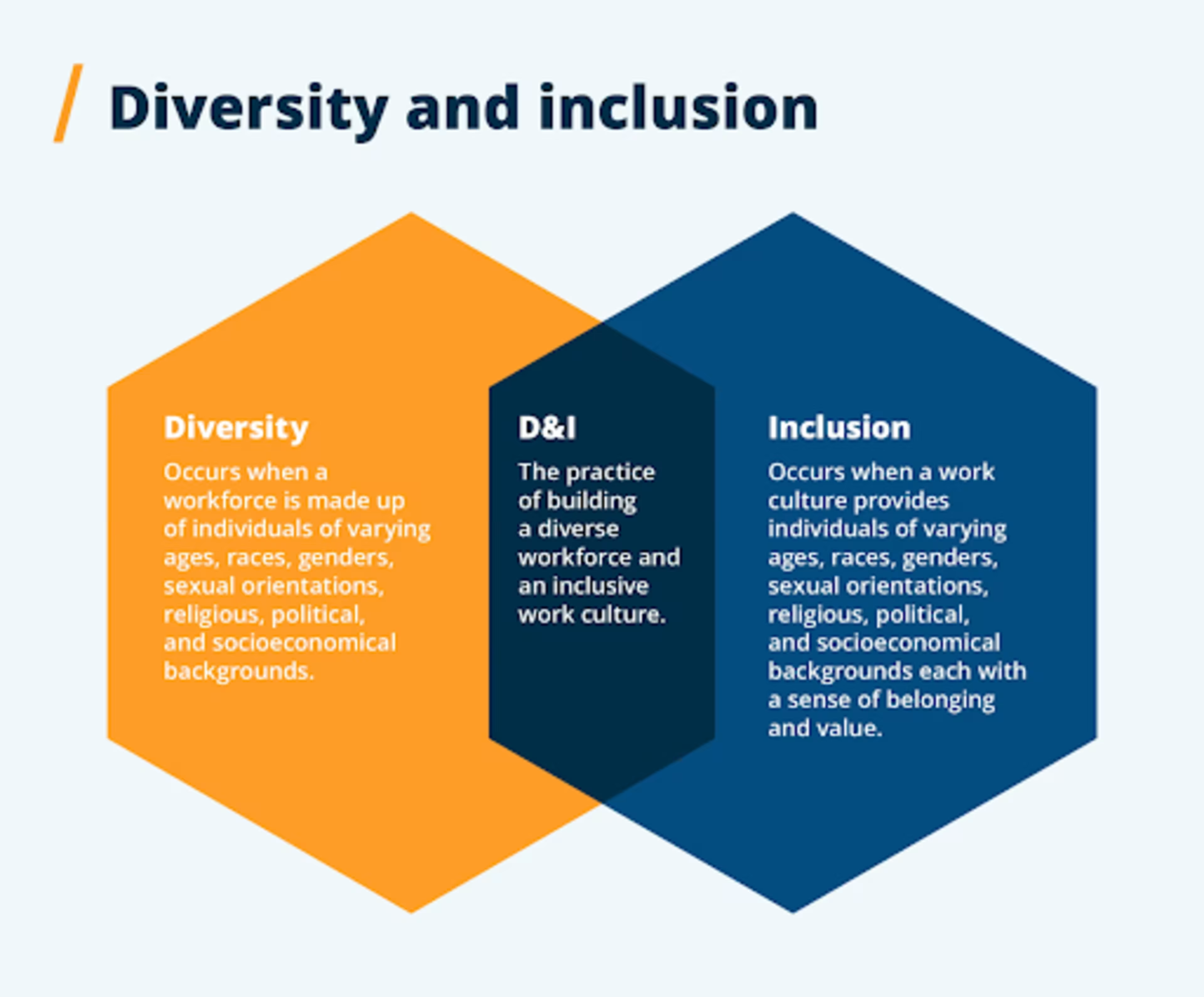Empower your employees to connect and work toward shared goals through ERGs.
In 2022, Capterra’s Remote Work DEI Survey* revealed that one-fifth (20%) of employees disagree with the statement that their current employer values different perspectives and opinions.
Ideally, that number would be 0%. But the good news is that an employee resource group (ERG) program can help dispel these feelings by bringing employees together and empowering them to work toward shared goals.
If you’re an HR manager who wants to roll out better DEI (diversity, equity, and inclusion) initiatives at your organization, and you’re considering starting employee resource groups as a means of doing so, this comprehensive guide is for you.
With insights from Gartner’s Foundations of Employee Resource Groups throughout[1], we’ve covered everything you need to know about ERGs, from the different types of groups commonly seen in the workplace to the resources you’ll need to start one at your organization.
Ready to hire a recruiting agency for your business needs? Browse our list of companies in the following areas:
What is an employee resource group?
Capterra’s glossary defines an employee resource group (ERG) as an employee-led initiative within an organization. An ERG may also be called a business resource group, affinity group, colleague resource group, or network group.
Participation in ERGs is voluntary and driven by a shared characteristic unique to the group of employees such as common interests, cultural backgrounds, or social concerns. ERGs are supported in many ways by the parent company, but they are not directly affiliated with or supervised by the company—instead, they are driven by employees.
ERGs are considered a DEI initiative that requires a considerable time and financial investment. Even so, about 90% of organizations currently have at least one employee resource group[1].
/ Tech tip
Community software, a category of tools designed to help businesses build and manage virtual communities, can be used to organize employee-led groups. Learn more about these platforms from our community software buyer’s guide.
What kinds of ERGs are typical for organizations?
From networking groups that help new employees find mentors to social clubs that support causes important to their local community, any voluntary, employee-led group within an organization can be classified as an ERG.
As is covered in the graphic below though, ERGs typically fall into at least one of these four categories:
Employee resource group
Employee list
Business resource group
Affinity group
The level of formality of the ERG depends on the goals of the group and the common ground that brings them together. For instance, professional development groups that provide employees the opportunity to share knowledge with cross-functional peers are considered more formal than other groups due to their close connection with the operations of the organization.
At the opposite end of the spectrum, affinity groups are usually driven by ideologies or interests unrelated to the workplace (and therefore, considered informal). For example, Amazon has 13 affinity groups within their workforce, including the Black Employee Network, Body Positive Peers, and Glamazon (a group focused on bringing cultural awareness to LGBTQ+ matters)[2].
Affinity groups (as well as business resource groups) are usually promoted both internally and externally, which is why they are characterized as having high visibility. Research shows that employees want to work for companies that value diversity and inclusion[3], so communicating that your organization supports diversity recruiting efforts and has active affinity groups can help attract talent to your workplace.
What are the benefits of employee resource groups?
There are many reasons why organizations should embrace ERGs, but the three below are amongst the most compelling:
Strengthened employer brand
Employer brand refers to your organization’s reputation as a place to work. Promoting active ERGs on your careers page has a positive effect on your employer brand, especially if those groups provide a safe space for individuals from underrepresented backgrounds or volunteer with external communities.
In Capterra’s Social Justice Response Survey**, just under a third (30%) of respondents reported that their employer does not donate money to specific causes, but they wish they did. So, if your business supports ERGs that give back to the community with either time or money, showcasing this will help position your employer brand in a positive light.
More impactful diversity recruiting efforts
In “How to Evolve Recruiting Practices to Drive Representation and Inclusion,” Gartner reports that 91% of recruiting executives are either neutral or believe their organization is not effective at attracting underrepresented talent[4].
However, recruiting teams at organizations with ERGs can change this by making open roles known to ERG members and encouraging them to share openings across their own professional networks, social media, and alumni groups. Recruiting leaders can also partner with ERG recruiting chairs or committees to expand where jobs are posted to attract more diverse talent (e.g., Lesbians Who Tech & Allies, The HBCU Foundation, Diversify Tech, Pride Circle).
Better employee experience
Participation in ERGs can have a significant impact on the employee experience, especially for organizations with a remote or hybrid workforce whose workers can’t connect in-person regularly.
Capital Group, a US-based financial services company, introduced their Women Leading Program in order to connect, develop, and foster relationships between women within their workforce. The results? 44% of participants made lateral or upward career moves within the organization in the year following the program’s end[5].
But even beyond supporting employee development, ERGs improve the employee experience by promoting inclusion. Whether group members choose to unite in order to bond over a common interest, rally around underrepresented employees, or drive change within their local community doesn’t matter—what matters is that they feel connected to their peers and supported by their employer.

3 key considerations for setting up an employee resource group
Below, we’ve broken down three things HR and DEI leaders need to consider when starting an employee resource group.
1. Each ERG needs a charter
An ERG charter is a document that outlines the structure, goals, and guidelines of the group. While HR leaders aren’t responsible for creating the charter (unless they have decided to be an executive sponsor for the group), it’s important to understand that this is one of the first steps employees need to take when creating a new ERG. HR leaders can support employees with this step by providing guidance and a charter template—of which many are available for free after a quick web search[6].
Each ERG charter will look different, but the main components are as follows:
Mission statement: Here, group members will outline the purpose of the ERG. They’ll need to think through opportunities and needs that exist (both internally or externally) that their group can address.
Group structure: How will the ERG be structured? What kind of leadership positions will exist within the group? This component should outline these details and include information about how the group will conduct elections and handle transitions between leaders.
Meeting schedule: This section should cover how often the group will meet and what the purpose of those meetings will be.
Membership guidelines: How should employees go about joining the ERG, and is membership open to everyone? Detail any requirements and rules related to group membership here.
/ Tip
We suggest creating your own version of an ERG charter template and uploading it to your company’s intranet (or wherever you store employee resources) along with instructions on how to use it.
2. Senior leaders make the most impactful executive sponsors
In order to drive real impact, ERGs need an executive sponsor. Executive sponsors are usually senior leaders from the organization who mentor and advocate for the ERG and its members. Executive sponsors are responsible for promoting ERG visibility and driving the group’s efficacy, as well as communicating the group’s progress to other executives and the organization.
Leaders from the HR department can act as executive sponsors where appropriate, such as for a business resource group focused on diversity recruiting initiatives. They also can provide support by identifying senior leaders within the organization who might connect with an ERG’s mission and encouraging them to get involved with the group—according to Gartner, 6% of ERG leaders are directly appointed by HR or DEI leaders[1].
/ Tip
When pitching ERG sponsorship to leaders, directly connect the group’s mission to business priorities, whether related to recruitment and retention, talent development, diversity and inclusion initiatives, product development, or community outreach.
3. Developing a budget for ERGs is a must
While many aspects of an ERG’s operations are in the hands of the group’s members, HR and DEI leaders can support them by providing the group with resources. In fact, 71% of ERGs are funded through an organization’s central DEI budget[1].
So, the question begs asking: How much money do ERGs need to be effective? Well, a survey from DiversityInc found that the average ERG’s budget is between $7,000 and $15,000[7]. This range varies depending on the size of the group and how their mission relates to business priorities.
Without funding, your ERG program’s potential to make real change is unfounded, which is why advocating for resource allocation for these groups is an essential responsibility for HR and DEI leaders.
/ Tip
Conduct a brainstorm meeting with relevant parties—co-workers interested in joining the ERG, potential leaders, or other internal stakeholders—to develop an at-a-glance budget to present to your CFO (or whomever is responsible for your DEI finances).
Extra resources to help you work towards a diverse, inclusive company culture
When properly funded and supported by leadership, ERGs can benefit your organization by promoting an inclusive workplace, improving diversity recruiting efforts, and boosting employee engagement.
However, even though 90% of organizations have at least one ERG, less than half of HR leaders are confident in their organizations’ ability to create accountability measures for diversity, equity and inclusion (DEI) outcomes[8].
If ramping up DEI efforts is a priority for your business in 2023, you can prepare yourself for success with the following resources:
Don’t Conflate Diversity and Inclusion: Though often lumped together, diversity and inclusion are two different concepts that require distinct business strategies. This article explains where the two intersect and provides advice on how to foster both within your workforce.
The Future of Talent Management is Diversity Tech, Continuous Learning, and Prioritizing Mental Health: This in-depth report takes a look at how businesses are currently turning to tech for help measuring the progress of DEI initiatives.
HR software: As we mentioned above, many businesses are incorporating technology into their DEI strategy. From analyzing job postings for bias language to collecting information about the demographics of your talent pool, a comprehensive HR platform is a must-have to progress your DEI goals in 2023.

